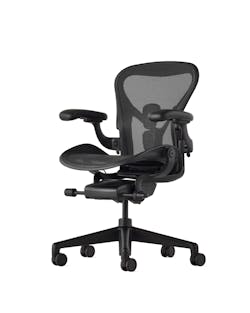Consider that building products have environmental impacts that can ripple into every community that is involved with their production: sourcing, manufacturing and shipping. Materials that minimize emissions, water, energy and waste protect people and the planet.
Five experts highlight how sustainable products contribute to carbon neutrality: Jackie Dettmar, VP marketing, design and product development at Mohawk Group; Gabe Wing, VP of sustainability for MillerKnoll; Kellie Ballew, Shaw Industries vice president of global sustainability and innovation; Annie Bevan, global head of sustainability for Superior Essex Communications; and Dr. Rachael Shwom, professor at Rutgers School of Environmental and Biological Sciences.
Why is it important to specify commercial building products from manufacturers prioritizing carbon neutrality?
Annie Bevan: Procuring low embodied carbon products helps companies make progress towards their Scope 3 targets. You’re also using your power as a consumer to show industries that demand is there, causing a huge impact that goes well beyond your immediate facility.
What are examples of how manufacturers are reducing their carbon footprint?
Gabe Wing: MillerKnoll has 2030 goals for 50% carbon reduction, and our largest production location is already using 100% renewables. But we also found that manufacturing only accounts for roughly 25% of our carbon—50% of a product’s embodied carbon is from the materials and supply chain. So we tasked our product designers to decarbon from the onset.
For example, virgin nylon 6 is carbon intensive, but we are offsetting it with recycled content. We also look for ways to use less of a material, with the attitude “not a molecule more than needed.” Durability and timeless design are essential too, so every product maximizes its lifespan.
Kellie Ballew: Shaw Industries set a 2030 goal in 2012 to reduce our operational greenhouse gas emissions by 40%--we met that goal nine years early in 2021. Our new target is net zero operations by 2030.
A great example of carbon innovation is EcoWorx, our fully recyclable, PVC-free carpet tile. Using recycled content reduces our reliance on virgin materials. That’s critically important because we calculated that the raw material supply chain accounts for the majority of EcoWorx’s carbon footprint—more than manufacturing, distribution and use-phase combined.
Bevan: Superior Essex Communications recently set our baseline and committed to the Science Based Targets initiative (SBTi), with a 47% carbon emissions reduction by 2030. We’ve also produced lifecycle assessments on the majority of our catalog. We already have solutions with recycled content between 24-50%. We also operate the first communication cable facility that is Zero Waste to Landfill.
Jackie Dettmar: Mohawk Group is one of the first manufacturers to sign the Climate Pledge, which is a commitment to report greenhouse gas emissions, adopt decarbonization initiatives and use offsets. Our Beyond Carbon Neutral is an additional 5% offset for every metric ton of embodied carbon mission of the product.
We’ve also reduced the need for virgin petroleum with high recycled plastic content and material recovered through our landfill diversion program. Many of our products are designated as Red List Free, NSF, FloorScore, Living Product Challenge, HPD, Declare and Green Label Plus.
Which building products have a strong impact on carbon neutrality?
Wing: Furniture matters in the long term. Jenn Chen of LMN Architects did a 2019 study that looks at carbon impact over 75 years of a building’s life. What was significant is that when a space is refreshed every seven to nine years, the carbon impact of remodeling is much bigger than the structure and operating carbon.
Ballew: Flooring is another material that’s highly affected by building renovation projects. There’s an estimated 250 billion square meters of buildings in the world today, and an additional 250 billion square meters expected to be built over the next 40 years, per the UN Environment Programme. The numbers add up.
Bevan: It’s also worth remembering that the lifespan of cabling and MEP materials is affected by renovations. MEP systems can equate up to 45% of embodied carbon over a building’s 30-year lifetime. Though cabling is one small piece, it is the nervous system connecting all the technologies that reduce the impact of operational carbon. In particular, PoE designs use about half as much material without affecting functionality, drastically reducing embodied carbon through dematerialization.
Wing: As a whole, we need to decarbonize everything. We have to do the hard work of actually reducing, not just offsetting. Real reductions are a much longer, deeper conversation than carbon neutral. If we’re not solving the problem, we’re not fundamentally changing the equation.



